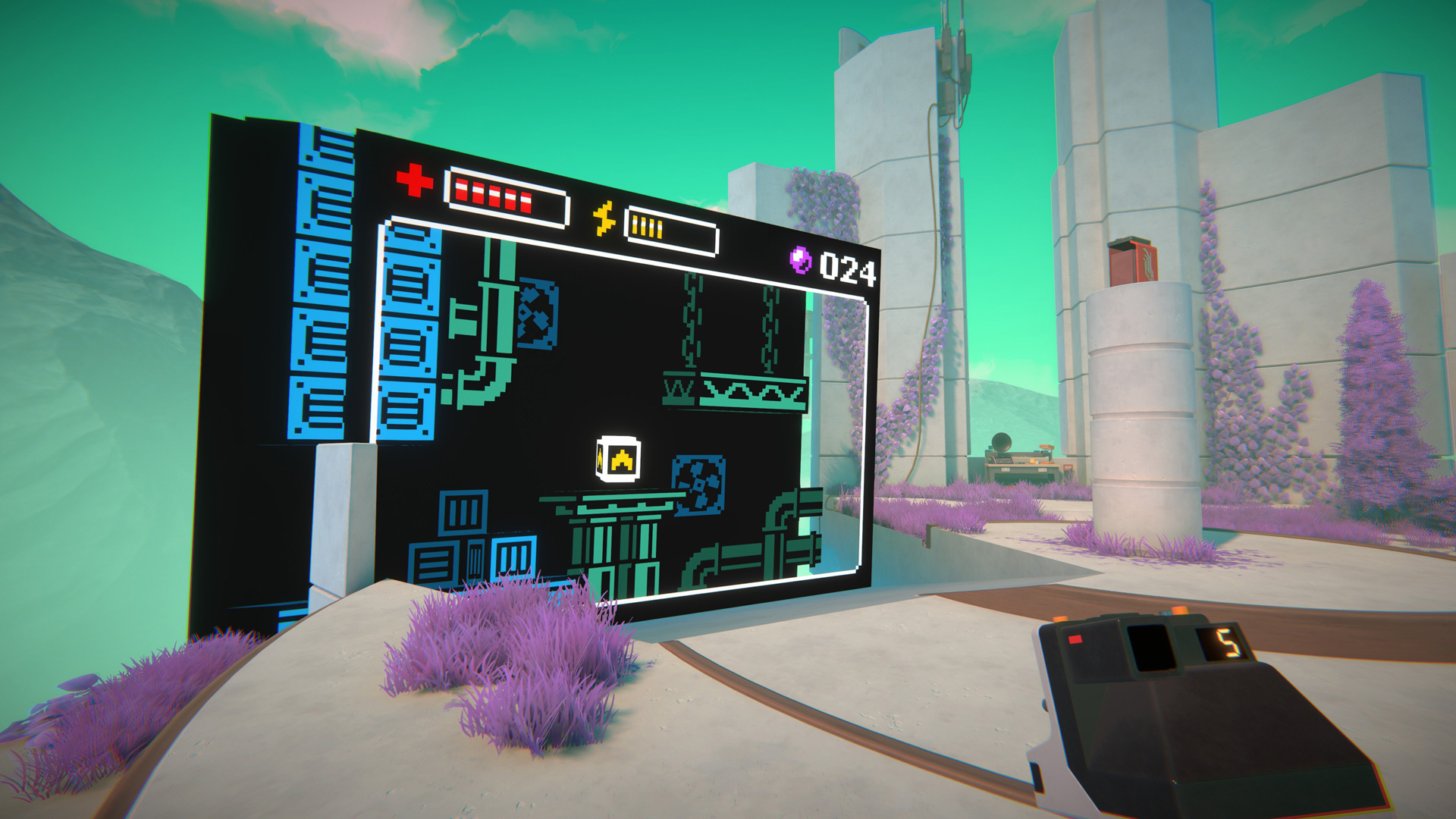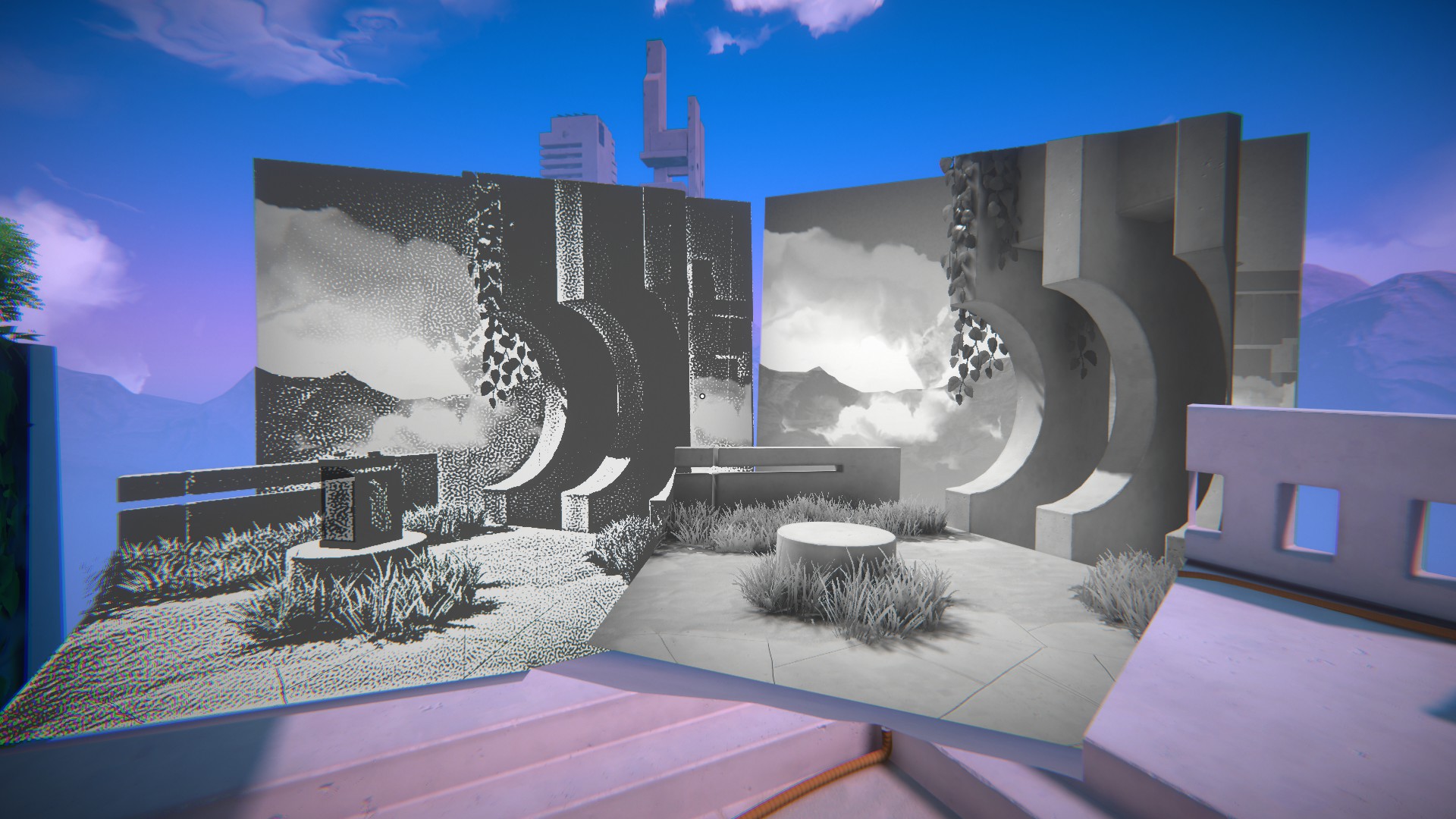 Few puzzle games manage to bend the player’s perception of reality quite like Viewfinder. With an innovative blend of visual trickery and challenging spatial puzzles, the game sets itself apart in the increasingly competitive genre of first-person puzzle games. By allowing players to manipulate the environment through photographs that come to life, this title brings a fresh, almost magical, approach to problem-solving that keeps players engaged. But despite its striking creativity, the game isn’t entirely without flaws, with some players feeling that its dazzling premise outshines the depth of its puzzles. Here, we take a closer look at both the highlights and potential downsides, with insights from early user feedback to paint a balanced picture of what this game offers. The review is proudly sponsored by Kour.
Few puzzle games manage to bend the player’s perception of reality quite like Viewfinder. With an innovative blend of visual trickery and challenging spatial puzzles, the game sets itself apart in the increasingly competitive genre of first-person puzzle games. By allowing players to manipulate the environment through photographs that come to life, this title brings a fresh, almost magical, approach to problem-solving that keeps players engaged. But despite its striking creativity, the game isn’t entirely without flaws, with some players feeling that its dazzling premise outshines the depth of its puzzles. Here, we take a closer look at both the highlights and potential downsides, with insights from early user feedback to paint a balanced picture of what this game offers. The review is proudly sponsored by Kour.
A Game of Perspective: Mechanics That Redefine Reality
At the heart of this title lies the ability to manipulate space and perspective in novel ways. Players can take photographs of any part of their surroundings, then use those images as real objects within the game world. Imagine photographing a staircase and using that picture to create an actual path that extends into a previously unreachable area. This mechanic allows players to reshape and rethink their surroundings continuously, effectively creating pathways, structures, and perspectives that weren’t initially there. The dynamic possibilities make each level feel like a blank canvas, ready to be sculpted into a solution that’s as clever as it is visually intriguing.
Players have expressed a strong appreciation for this unique approach, which breathes fresh air into the standard puzzle-solving formula. The mechanics encourage experimentation and creative thinking, rewarding those who are willing to test boundaries and push the limits of what’s possible. It’s not simply a matter of solving the puzzles but of finding new ways to interpret and interact with the space around them, something that resonates deeply with fans of innovative gameplay.
Visuals and Aesthetic: Art Meets Interaction
The game’s visual design is perhaps one of its strongest attributes. The environments blend minimalist realism with dreamlike colors and textures, giving each level an almost surreal quality. From shadowy, monochrome rooms to vibrant landscapes, the variety in settings keeps the experience visually stimulating and emotionally engaging. Each environment feels handcrafted, with small details that players might miss at first glance but which reveal new paths or perspectives upon closer inspection. This level of detail isn’t just eye candy; it plays directly into the gameplay, encouraging players to look twice or experiment with seemingly inconspicuous elements.
Players have often highlighted the game’s aesthetic appeal, noting that the artistic style brings a calming, almost meditative quality to the experience. However, some user feedback suggests that while the game is visually striking, the contrast between the diverse environments and the main character’s somewhat generic look feels inconsistent. For a title so dedicated to manipulating perspective, a more distinctive character model might have enhanced the immersive experience further.
Level Design: A Mixed Bag of Complexity
Viewfinder offers a range of levels that vary in difficulty and design, catering to both casual players and puzzle veterans. Each level challenges the player’s spatial reasoning and perspective manipulation skills, with puzzles that require not only clever thinking but also creative use of photographs and environmental elements. Early stages are designed to ease players into the mechanics, providing ample opportunities to experiment with the tools at hand. However, as the game progresses, the puzzles ramp up in complexity, introducing layers of challenge that require players to think beyond traditional solutions.
For some, the complexity curve feels well-paced, but others have expressed frustration at certain levels that seem overly complex or tedious. In particular, the later stages introduce additional rules and limitations that may detract from the initial freedom and creativity that the game encourages. User feedback highlights that some of these more challenging puzzles feel somewhat repetitive or convoluted, potentially disrupting the otherwise smooth flow of the gameplay.
Storyline and Narrative Depth: A Hit or Miss
The game does offer a storyline that weaves through its various levels, albeit in a relatively subtle manner. Players are introduced to an enigmatic world where they uncover pieces of a narrative as they progress, piecing together clues about the universe’s lore and the protagonist’s purpose. Although the storyline isn’t the game’s primary focus, it adds a layer of intrigue and mystery, enticing players to progress in search of answers.
However, reactions to the narrative have been mixed. While some players appreciate the atmospheric storytelling and minimalist approach, others feel that the storyline could benefit from more depth. For a game as innovative as this one, the lack of a stronger narrative may leave some players feeling as if something essential is missing. Additionally, certain story elements, while interesting, lack the emotional punch that might make players feel more connected to the world or the protagonist. As a result, while the story adds some context to the gameplay, it may not be memorable for everyone.
Controls and Usability: An Accessible, if Occasionally Unintuitive, Experience
Viewfinder is largely user-friendly, with intuitive controls that allow players to focus on the puzzles rather than grappling with complex mechanics. This simplicity makes the game accessible to a wide audience, including players who may not be seasoned gamers. The act of taking photographs, positioning them, and turning them into interactive objects is generally smooth and satisfying, a testament to the developers’ attention to user experience.
However, some players report minor frustrations when it comes to the precision required for certain puzzles. Occasionally, positioning a photograph exactly where it needs to be can feel finicky, leading to moments where the controls become more of a hindrance than a help. Such issues aren’t game-breaking but could be improved with minor adjustments to enhance the flow and reduce unnecessary repetition.
Replayability and Longevity: A Short But Impactful Journey
One aspect where the game divides opinion is its replayability. While the puzzles are innovative, once solved, they lack the mystery that makes the initial experience so captivating. For players who value games they can return to repeatedly, the title’s limited replayability might be a drawback. However, for others, the concise journey is refreshing, delivering a well-rounded experience that doesn’t overstay its welcome.
That said, the developers have hinted at the potential for future updates, possibly including new levels or community-generated content, which could significantly enhance the game’s lifespan. For now, though, the experience is best suited to those looking for a memorable, finite adventure rather than a game they’ll return to regularly.
The Verdict: A Refreshing Puzzle Game with Room for Improvement
This title’s strength lies in its innovative mechanics, striking visuals, and the freedom it grants players to experiment. The puzzle design, while not flawless, offers a fresh take that keeps players engaged and thinking creatively, with each level encouraging them to see the world from a different angle. While the game’s narrative depth and minor control issues might leave some players wanting, the overall experience is unique enough to recommend to puzzle enthusiasts and fans of artistic games alike.
In sum, Viewfinder succeeds in delivering an imaginative, perspective-shifting experience that feels unlike anything else in the puzzle genre. Though there are aspects that could benefit from fine-tuning—particularly the later levels and the storyline—the game’s innovative approach to space and reality offers something fresh and intriguing. For those seeking a visually stunning, thought-provoking adventure, this title is well worth exploring, providing a refreshing reminder that in the world of gaming, there’s always more than one way to look at things.